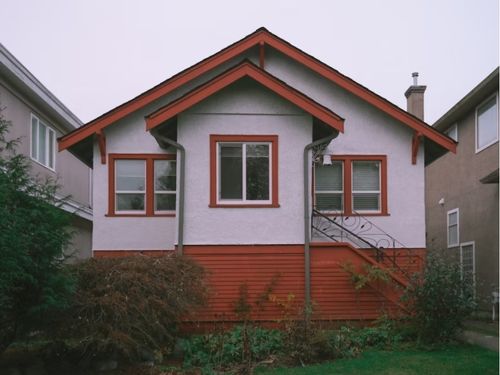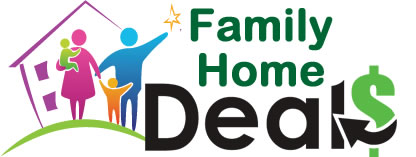Owning multiple properties is a testament to financial stability and achievement. For families, it often represents not just wealth, but also security and the ability to create lasting legacies. Whether it’s a vacation home by the beach, a rental property in the city, or a second house closer to extended relatives, the benefits are appealing. However, there are also challenges to consider, from financial strains to the responsibility of upkeep. Here’s a closer look at the pros and cons of owning multiple properties as a family.
The Pros

1. Financial Security and Wealth Building
One of the most significant advantages of owning multiple properties as a family is the potential for long-term financial security. Unlike cars or gadgets, which tend to lose value over time, real estate generally appreciates, mainly when properties are located in growing neighborhoods or desirable areas. This steady increase in value enables families to build equity, which can later be leveraged for significant expenses, such as children’s education, business ventures, or future property investments.
Beyond appreciation, properties can also serve as powerful financial tools. Families can leverage them as collateral to secure loans or lines of credit, opening doors to other wealth-building opportunities. In many cases, owning multiple homes serves as the foundation for generational wealth, as properties are passed down to children or grandchildren. Instead of starting from scratch, the next generation inherits valuable assets that can either provide income through rentals or be sold for significant financial gain. In this way, multiple properties don’t just support present security—they become a lasting legacy for the family’s future.
2. Retal Income Potential
Another significant benefit of owning multiple properties is the opportunity to generate rental income. Families can transform a second home into a long-term rental, or even explore short-term options through platforms like Airbnb and Vrbo. This additional cash flow can provide steady financial support, helping to cover mortgage payments, offset maintenance costs, or contribute to everyday household expenses. In some cases, a well-located rental property can generate profits that exceed its own costs, becoming a reliable source of passive income.
For families with long-term financial goals, rental income plays a crucial role in securing stability. The extra funds can be directed toward major life expenses such as college tuition, medical bills, or retirement savings, reducing reliance on traditional income streams. Additionally, rental income provides a cushion during economic downturns or job changes, offering a level of financial flexibility that a single property may not provide. While becoming a landlord comes with responsibilities such as tenant management and property upkeep, the potential rewards can make it a worthwhile venture for families seeking to strengthen their financial foundation.
3. Lifestyle Flexibility
Owning multiple homes offers families the gift of choice and convenience. A property in the city, for example, can place families closer to work, schools, hospitals, and social activities, making everyday life more efficient. Meanwhile, a countryside house, mountain cabin, or beachfront retreat offers a peaceful escape from fast-paced urban living, providing families with the opportunity to recharge and reconnect. This balance between practicality and leisure creates a lifestyle that’s not only flexible but also deeply rewarding.
Beyond personal use, lifestyle flexibility also extends to how families manage and rotate between their properties. A vacation home can double as a rental when not in use, or a second property may serve as a temporary residence for children attending college, relatives visiting from abroad, or even a future retirement space. This adaptability enables families to maximize their investments while enjoying the unique benefits each location has to offer. Whether it’s a quick weekend getaway or a seasonal relocation, having multiple properties ensures families can tailor their living arrangements to fit their evolving needs and lifestyles.
4. Legacy and Emotional Value
While multiple properties often symbolize financial success, their actual value can extend far beyond the numbers on a balance sheet. Homes carry emotional weight because they are the settings for life’s most meaningful moments—holidays, birthdays, family reunions, and quiet weekends together. A vacation home, for instance, can transform into a cherished gathering place where grandparents, parents, and children come together year after year, weaving traditions that endure for generations. Over time, these properties become touchstones of family identity, holding not just bricks and mortar but also stories and memories.
Passing down a family property can also strengthen the sense of continuity between generations. Instead of leaving only financial assets, parents and grandparents leave behind a tangible legacy that children and grandchildren can continue to enjoy. This creates a living legacy—one that connects the past, present, and future. Families often feel a deep sense of pride in maintaining these homes, knowing that they represent more than just investments; they are symbols of love, heritage, and togetherness. In this way, the emotional value of owning multiple properties can rival, and sometimes exceed, their financial benefits.
5. Tax Benefits
Owning multiple properties doesn’t just build wealth through appreciation and rental income—it can also open the door to valuable tax advantages. In many regions, families can deduct mortgage interest and property taxes, which helps reduce overall taxable income. Rental properties, in particular, offer additional opportunities, such as writing off depreciation, repairs, and certain operating expenses, including property management fees and insurance. These deductions can significantly lighten the financial load, making it easier for families to manage the costs of ownership.
Beyond deductions, some tax laws allow families to defer or reduce capital gains taxes when selling a property, provided the proceeds are reinvested into another real estate purchase. This strategy, often used by seasoned investors, enables families to grow their property portfolios while minimizing tax burdens. However, tax rules vary widely depending on location and usage of the property, so working with a tax professional is essential to maximize these benefits. When handled wisely, tax advantages can make owning multiple properties not only financially feasible but also advantageous.
The Cons

1. High Financial Commitment
The most immediate challenge of owning multiple properties is the financial burden that comes with it. Beyond the initial down payments, families must account for ongoing costs such as monthly mortgage payments, property taxes, homeowners’ insurance, utilities, and routine upkeep. Each additional property multiplies these expenses, which can quickly add up and place pressure on family budgets. Without careful planning, even financially stable households may find themselves stretched thin.
It’s also important to consider that real estate is not a one-time purchase but a long-term responsibility. Market fluctuations, unexpected repairs, or rising tax rates can further increase costs, sometimes at inconvenient times. For families juggling other major financial priorities—such as children’s education, healthcare, or retirement savings—the demands of multiple properties may seem overwhelming. This is why financial foresight, emergency funds, and realistic budgeting are crucial before expanding into numerous homeownerships. Otherwise, what was meant to be a source of security may become a source of stress instead.
2. Maintenance and Upkeep
Owning a single home already comes with its fair share of responsibilities, but when families own multiple properties, the workload multiplies. Each house requires regular maintenance, including plumbing, electrical systems, heating and cooling systems, roof inspections, pest control, and landscaping, among other basics. Unexpected issues, like a leaking pipe or storm damage, can quickly escalate into costly repairs if not addressed promptly. Managing these tasks across multiple properties can be time-consuming and stressful, especially for families balancing busy schedules.
To ease the burden, many families hire property managers or maintenance services, but that adds another expense to the equation. While professional help can ensure properties are well-kept, it reduces overall rental profits or strains the household budget if the homes are purely for personal use. For vacation homes or rentals located far from the family’s primary residence, maintenance can also become logistically challenging. Ultimately, maintaining multiple properties in good condition requires not only financial resources but also a long-term commitment of time, planning, and effort.
3. Market Risks
Real estate is often seen as a stable investment, but property values are not immune to change. Economic downturns, shifts in interest rates, or broader housing market corrections can cause property prices to drop, sometimes significantly. Families who rely heavily on their real estate portfolio may find their financial security shaken if property values decline during a time when they need to sell or refinance their properties. What once looked like a solid investment can suddenly feel like a liability.
Market risks also extend beyond the economy. Neighborhood changes—such as declining school ratings, rising crime rates, or the closure of major employers—can impact a property’s desirability and reduce its long-term value. Natural disasters, from floods and wildfires to earthquakes, can also cause damage and decrease demand in certain areas, even if insurance covers repair costs. For families, this means that multiple properties, while offering potential for wealth-building, also carry exposure to forces beyond their control. Diversifying investments across different asset types, not just real estate, becomes essential to manage these risks wisely.
Get ready to score unbeatable Black Friday steals at HOBIBEAR
From cozy winter boots to everyday sneakers, HOBIBEAR limited-time deals make it easy to upgrade little wardrobes without stretching your budget. Every pair is crafted for comfort, adventure, and long-lasting value—perfect for holiday gifting or stocking up for the seasons ahead. Don’t miss your chance to grab these doorbuster favorites at hobibear.com before they’re gone.
4. Tax Complexity
Although multiple properties can unlock valuable deductions, they also introduce a new level of tax complexity. Each property may have different rules depending on whether it’s a primary residence, vacation home, or rental. Families can face higher property taxes in certain areas, mainly if a house is classified as non-owner-occupied. Selling a property can also trigger capital gains taxes, which may significantly reduce profits unless exemptions or reinvestment strategies are carefully applied.
Additionally, deductions can vary depending on how the property is utilized. For instance, vacation homes rented out only part of the year may not qualify for the same benefits as full-time rental properties. Tracking expenses, depreciation, and income becomes increasingly complicated, often requiring the assistance of accountants or tax professionals. Without expert guidance, families may miss out on potential savings or, worse, face penalties for misfiling. While the financial benefits of tax breaks are real, the added complexity means families need to stay organized and informed to avoid turning an opportunity into a headache.
5. Limited Liquidity
Unlike stocks or bonds that can be sold quickly, real estate is considered an illiquid asset. Converting a property into cash often requires months of preparation, including listing the home, finding a buyer, negotiating offers, and completing closing procedures. During this time, families may not be able to access the funds they urgently need, which can be a significant drawback in cases of medical emergencies, sudden job loss, or other unexpected expenses. Even if a property sells quickly, the family may still incur transaction costs, such as agent commissions, legal fees, and closing expenses, that reduce the final payout.
This lack of liquidity can limit financial flexibility, particularly when families hold the majority of their wealth in real estate. While properties build long-term stability, they are not designed for short-term financial needs. Families who over-invest in multiple homes may find themselves “house rich but cash poor,” with significant assets on paper but limited liquid funds to handle life’s immediate challenges. To balance this risk, it’s often wise to diversify investments, ensuring that not all wealth is tied up in a single property.
Weighing the Rewards and Risks of Family Property Ownership
Owning multiple properties can be a smart strategy for families seeking both financial growth and lifestyle perks—but it’s not for everyone. Careful financial planning, realistic expectations, and professional advice are essential before taking action. For some families, the benefits outweigh the costs, creating wealth and cherished traditions that last a lifetime. For others, the responsibility and risks may overshadow the rewards.


